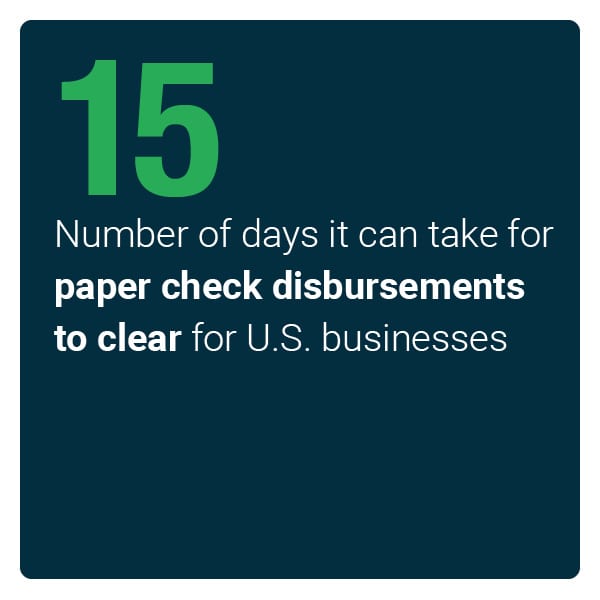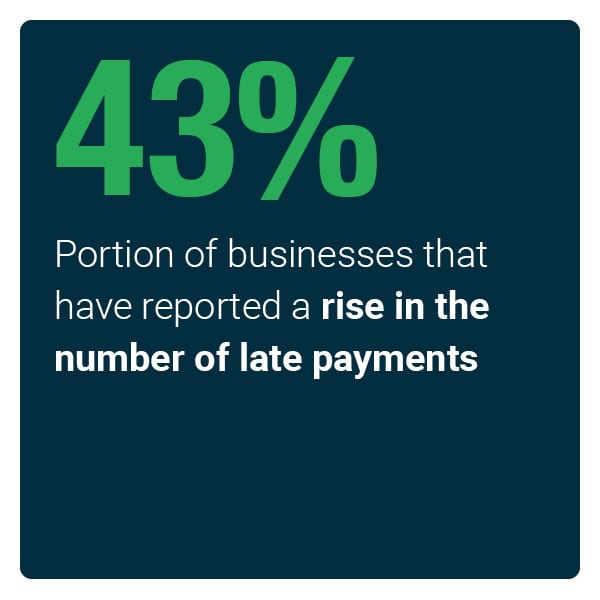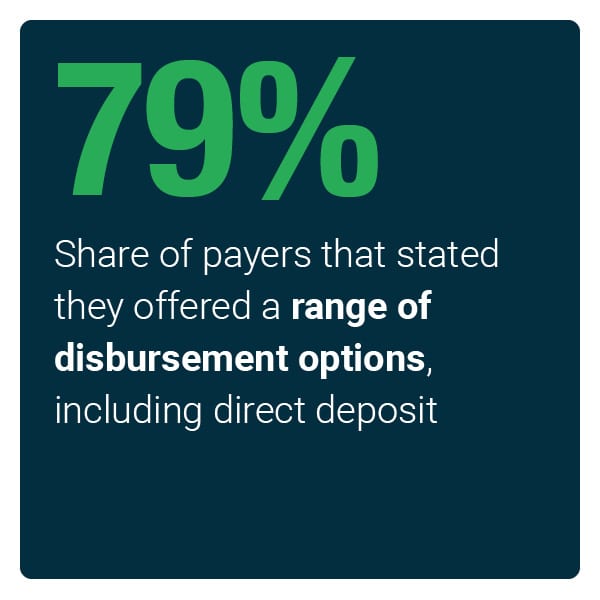Businesses of all sizes are doing their best to stay on top of changing payment trends and consumer expectations as the pandemic continues to impact how money is moved.
These rapidly shifting trends have also caused most firms to become more concerned over the status of their own cash flow — knowing exactly where their incoming and outgoing payments stand at any given moment can be make or break for these entities, especially for small- to medium-sized businesses (SMBs) with less resources on hand.
Companies therefore need access to tools or tec hnologies that can grant them a more transparent look into the status of their funds — and most importantly, can allow them to disburse or collect funds with more efficiency. Paper checks still remain part-and-parcel of B2B payments for many entities, however, something that can obscure the true state of their cash flow, and that can slow the delivery of funds to waiting employees or suppliers.
hnologies that can grant them a more transparent look into the status of their funds — and most importantly, can allow them to disburse or collect funds with more efficiency. Paper checks still remain part-and-parcel of B2B payments for many entities, however, something that can obscure the true state of their cash flow, and that can slow the delivery of funds to waiting employees or suppliers.
In the October Disbursements Tracker®, PYMNTS takes a closer look at how the ongoing pandemic is impacting the world of treasury management, what it is revealing about the continued role of paper checks in this space, and why the adoption of digital or even instant payments solutions seems to have expanded in recent months due to pandemic-driven trends.
Around the Disbursements World
Advertisement: Scroll to Continue
One financial institution (FI) that is moving quickly to add digital supports for its clients is PNC Bank. The financial entity has rolled out a push-to-debit feature for its treasury customers with the assistance of a third-party technology partner, according to recent announcements. The tool will enable PNC clients to disburse money at speed to their own clients as well as their employees, without having to fall back on legacy payment methods. Using digital push payments can also help add security to B2B transactions, thanks to the cybersecurity measures that can be grafted into these processes. Payments are automatically declined if there is not enough money in the accounts pushing the funds, for example, something that can help to prevent fraudsters from accessing these funds if they have gotten illegitimate access to related accounts.
Regional banks are following suit:  First Horizon National Corporation, a regional FI based in Tennessee, has announced its partnership with a third-party technology provider to grant its treasury clients access to instant disbursement solutions. The solution will use application programming interfaces (APIs), technology that more easily connects payments between different accounts to add more speed to these treasury services. Having this digital access will allow the bank’s clients to pay out insurance claims or wages near-instantly and to conduct other treasury management processes without having to deal with all of the friction points of checks or paper invoices.
First Horizon National Corporation, a regional FI based in Tennessee, has announced its partnership with a third-party technology provider to grant its treasury clients access to instant disbursement solutions. The solution will use application programming interfaces (APIs), technology that more easily connects payments between different accounts to add more speed to these treasury services. Having this digital access will allow the bank’s clients to pay out insurance claims or wages near-instantly and to conduct other treasury management processes without having to deal with all of the friction points of checks or paper invoices.
Integrating digital or instant payments can do more than just speed up these transactions. One PYMNTS study found that offering such capabilities can actually impact businesses’ loyalty, for example. Businesses — most notably SMBs — are twice as likely to stay loyal to FIs that allow them to make faster disbursements, the study found. Most treasurers or payors have begun to offer their clients a variety of payment options in order to engineer such loyalty. Instant payments solutions themselves are still on a relatively slow growth curve, but 78.8 percent of payors surveyed are offering paper checks, direct deposit and credit cards as options for disbursements. Digital disbursements therefore appear to be taking a greater role in treasury management.
For more on these and other stories, visit the Tracker’s News & Trends.
Why the Pandemic Is Propelling Digital Payments for Treasury Management
 Businesses have quickly adapted to the changes in how consumers shop, pay or collect funds such as rewards and rebates from their preferred merchants. Yet many firms are still tapping paper checks to conduct their B2B payment needs, adding costs and time to these transactions that businesses can no longer afford to lose. Firms are therefore looking to use digital tools to speed up B2B disbursements and payments — as well as to conduct other aspects of their treasury needs with more efficiency.
Businesses have quickly adapted to the changes in how consumers shop, pay or collect funds such as rewards and rebates from their preferred merchants. Yet many firms are still tapping paper checks to conduct their B2B payment needs, adding costs and time to these transactions that businesses can no longer afford to lose. Firms are therefore looking to use digital tools to speed up B2B disbursements and payments — as well as to conduct other aspects of their treasury needs with more efficiency.
PYMNTS spoke with both Katrina King, executive vice president and treasury management manager for Cadence Bank, as well as Bridgit Chayt, senior vice president and director of commercial payments and treasury management at Fifth Third Bank, to understand how the pandemic has exposed the weaknesses of paper-based payments and what that means for the future of treasury.
To learn more about how pandemic-driven disbursement trends may be pushing the adoption of digital treasury solutions forward, visit the Tracker’s Feature Story.
Deep Dive: How Paper Checks’ Treasury Dominance Is Crippling Businesses
Paper checks — costly and friction-laden as they are — still represent the way that 42 percent of businesses pay their suppliers, according to one study. Paper checks thus remain a thriving part of the treasury space for many businesses, as well as their employees, business partners and vendors, a reliance that is leading to severe frustrations as the ongoing global health crisis continues to hamper in-person or paper-laden business processes. Many businesses are therefore on the hunt for instant payment systems that can help them send out disbursements or receive funds with the speed and security they need during the pandemic.
To learn more about why many businesses still remain check-reliant and how real-time disbursements can help add economic benefits, visit the Tracker’s Deep Dive.
About the Tracker
The PYMNTS Disbursements Tracker®, powered by Ingo Money, is the go-to monthly resource for staying up to date on the trends and changes in the digital disbursements space.

